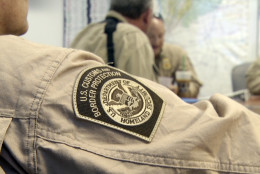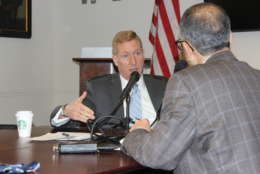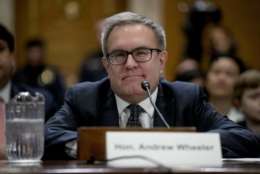Hiring/Retention
-
Some estimates put the number of cyber job openings at a more than 300,000. It's a nationwide problem.
April 10, 2019 -
IRS Commissioner Chuck Rettig has urged members of a House Appropriations subcommittee to give the agency the authority to hire short-term cyber and IT talent more quickly and pay them at a rate beyond the pay scale for career employees.
April 09, 2019 -
Back-end IT upgrades and more "virtual" recruiting are part of the Army's plan to address recruiting shortfalls.
April 09, 2019 -
As turmoil hits the DHS appointee ranks, it's a perfect time for the Senior Executive Service to shine.
April 08, 2019 -
The federal intelligence community has been encouraged by the Office of the Director of National Intelligence to promote the retention and hiring of employees who suffer from disabilities.
April 08, 2019 -
In today's Federal Newscast, the Federal Services Impasses Panel sides mostly with management in a disputed between labor groups and the Health and Human Services Department.
April 08, 2019 -
Despite a big jump in population responsibilities and major changes, the number of federal workers is about the same as it was decades ago.
April 08, 2019 -
Customs and Border Protection has ended a controversial contract with Accenture Federal Services, the contractor the agency brought on to help CBP recruit and hire hundreds of new Border Patrol agents and officers.
April 05, 2019 -
A new RAND study finds women and leaving the Coast Guard due to multiple factors and offers some ways to fix it.
April 05, 2019 -
Attracting enough cybersecurity and IT talent is a well-known problem across government, but technology always has ripple effects, and those are starting to affect hiring in other fields as well.
April 05, 2019 -
Senior Correspondent Mike Causey thought he had a scoop that the Social Security Administration was offering buyouts to long-time employees but he explains why that's a misunderstanding.
April 05, 2019 -
Eligible employees of SSA have until May 31 to decide if they will take an early retirement, according to an email Federal News Network obtained.
April 04, 2019 -
What if artificial intelligence could predict when agency employees feel like quitting before they’re out the door? The Naval Research Laboratory is looking at using AI tools to comb through data from exit surveys and flag common workplace issues.
April 04, 2019 -
The White House proposed a 31.2 percent cut from the EPA's 2020 budget, including reductions in research and development funding by 45.8 percent.
April 04, 2019 -
The Census Bureau has shifted its focus for 2020 to scaling up operations to count more than 300 million people living in the United States.
April 02, 2019















